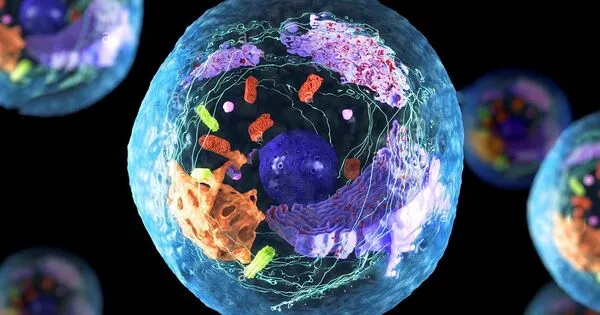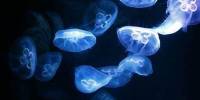The cell cycle, also known as the cell-division cycle, is the sequence of events that occurs in a cell that causes it to divide into two daughter cells. These events include the replication of its DNA and some of its organelles, followed by the division of its cytoplasm and other components into two daughter cells in a process known as cell division.
The mTOR protein is important for cell growth, proliferation, and survival. Its activity is affected by the availability of nutrients as well as some growth factors such as hormones. This protein has been linked to a number of diseases, including cancer, where its activity is frequently increased.
A team from the University of Geneva (UNIGE), in collaboration with researchers from the Martin Luther University (MLU) of Halle-Wittenberg in Germany, and the recently inaugurated Dubochet Center for Imaging (UNIGE-UNIL-EPFL), has identified the structure of the SEA complex, an interdependent set of proteins that controls mTOR. The discovery of this structure improves our understanding of how cells perceive nutrient levels in order to regulate their growth. This work is published in the journal Nature.
The mTOR protein (mammalian target of rapamycin) is the master regulator of cell growth from yeast to humans. This protein responds to environmental signals such as nutrients and hormones and regulates many fundamental cellular functions such as protein and lipid synthesis, energy production by mitochondria, and cell structure organization. mTOR activity disruptions are the root cause of many diseases, including diabetes, obesity, epilepsy, and various types of cancer.
This finding is quite surprising given that SEACAT has long been described as a direct inhibitor of SEACIT. In the presence of an active SEACAT, we expected SEACIT to be inactive. Our findings indicate that SEACAT functions more as a scaffold for the recruitment of other regulatory proteins, and that its presence is thus required but not sufficient for the inhibition of SEACIT.
Robbie Loewith
Two opposing functions in the same complex
The laboratory of Robbie Loewith, Professor in the Department of Molecular and Cellular Biology at the UNIGE Faculty of Science and director of the National Center for Competence in Research in Chemical Biology, is interested in the regulation of mTOR, and in particular in the SEA complex, which is the direct sensor of nutrients and which controls the activity of mTOR. The SEA complex is composed of eight proteins. One part of the SEA complex (SEACIT) is involved in the inhibition of mTOR activity, while the other part (SEACAT) is involved in its activation.
The SEACIT subcomplex inhibits cell growth by blocking the mTOR protein in the absence of nutrients. In the presence of nutrients, on the other hand, the SEACAT subcomplex is thought to inhibit the SEACIT subcomplex, which can no longer block the mTOR protein. The central controller can then play an activating role in cell growth by stimulating the production of proteins and lipids, for example. It is still unclear how SEACAT regulates SEACIT.

Determining structure to understand function
To determine the interactions between the proteins of the SEA complex, and thus better understand how they work, the researchers set out to determine the structure of this complex. After biochemically separating the SEA complex from all of the other components in the cell, the scientists used the technologies of the Dubochet Center for Imaging of UNIGE, UNIL and EPFL to obtain its molecular structure by cryo-electron microscopy (cryo-EM).
”By freezing the samples very quickly at -180°C, cryo-EM allows to obtain the structure of the proteins in their original state, i.e. in their functional three-dimensional form,” explains Lucas Tafur, a researcher in the Department of Molecular and Cellular Biology and first author of the study.
SEACAT is necessary but not sufficient
The biochemical activities of the complex’s various components were then tested in the laboratory. Despite the fact that the SEACAT subcomplex is active (as it is when nutrients are present), the researchers discovered that the SEACIT subcomplex is still active and capable of blocking mTOR.
“This finding is quite surprising given that SEACAT has long been described as a direct inhibitor of SEACIT. In the presence of an active SEACAT, we expected SEACIT to be inactive. Our findings indicate that SEACAT functions more as a scaffold for the recruitment of other regulatory proteins, and that its presence is thus required but not sufficient for the inhibition of SEACIT,” explains Robbie Loewith, the study’s final author.
The discovery of the structure of the SEA complex has enabled the identification of missing links in the mTOR regulatory cascade. “Of course, we must now identify the previously unknown partners who are associated with this complex. These new factors could be therapeutic targets for tumors with increased mTOR activity,” says Lucas Tafur.
















